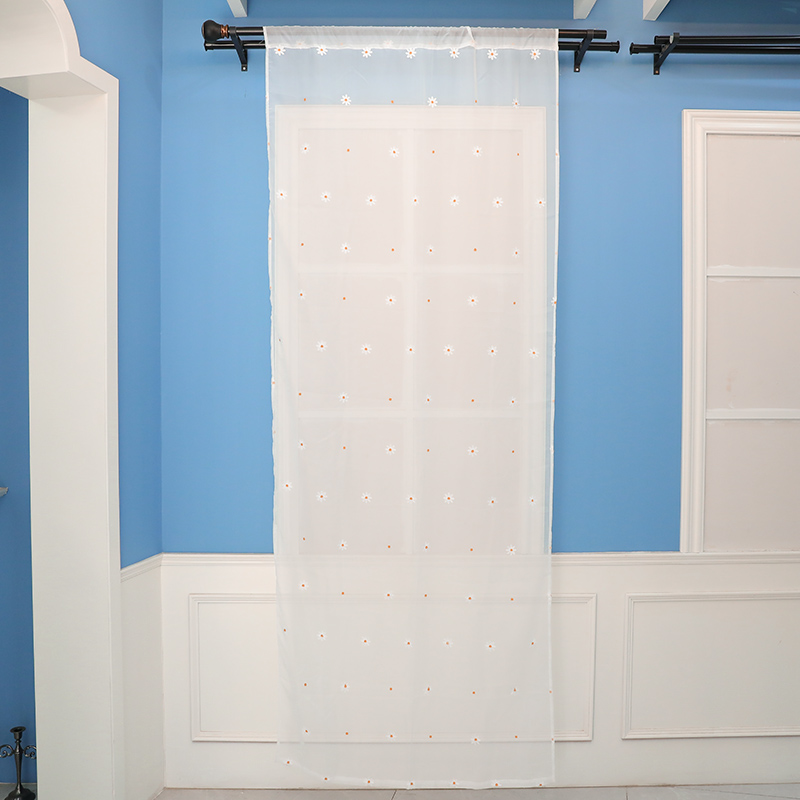Is the rural embroidered sheer curtain suitable for use in different climates or environments, such as humid or dry regions?
Posted by Admin
The suitability of the Rural Embroidered Sheer Curtain for different climates or environments depends on several factors:
Fabric Composition: The Rural Embroidered Sheer Curtain's fabric composition plays a pivotal role in its suitability for different climates. Natural fibers like cotton or linen are renowned for their breathability and luxurious feel, making them popular choices for curtains. However, in humid environments, these fabrics have a propensity to absorb moisture from the air, which can lead to issues like mildew, mold, and musty odors if proper ventilation and maintenance protocols are not observed. Conversely, curtains crafted from synthetic fibers such as polyester offer greater resistance to moisture absorption, reducing the likelihood of mold growth and making them potentially more suitable for humid climates. Nevertheless, synthetic fabrics may lack the natural breathability of their organic counterparts, potentially impacting airflow and comfort levels in certain environments. Thus, users should carefully weigh the pros and cons of different fabric options based on their specific climate and preferences.
Ventilation: Adequate ventilation is paramount, particularly in regions characterized by high humidity levels, to mitigate moisture-related problems associated with curtains. Sheer curtains, exemplified by the Rural Embroidered Sheer Curtain, are inherently advantageous in humid climates due to their lightweight and translucent nature, which facilitates better airflow compared to heavier drapery alternatives. By allowing air to circulate more freely, sheer curtains help prevent stagnant air pockets around windows, thereby reducing the likelihood of condensation and mold formation. To optimize ventilation, users should ensure that windows remain open whenever feasible, utilize fans or air purifiers to enhance airflow, and periodically inspect curtains and window areas for signs of moisture buildup.
Sun Exposure: Sun exposure poses challenges for curtains irrespective of climate, necessitating thoughtful consideration of the Rural Embroidered Sheer Curtain's resilience to UV radiation. While sheer curtains enable soft, diffused light to permeate living spaces, enhancing ambiance and visual appeal, they also serve as a protective barrier against harmful UV rays. Nevertheless, prolonged exposure to intense sunlight can accelerate fabric degradation, leading to fading, discoloration, and weakening of fibers over time. In regions characterized by high solar radiation levels or prolonged daylight hours, users should implement strategies to minimize direct sun exposure, such as utilizing UV-blocking window films, installing awnings or shades, or rotating curtains periodically to distribute sunlight evenly and mitigate the risk of sun damage.
Durability: The Rural Embroidered Sheer Curtain's durability in diverse climates hinges on a multitude of factors, encompassing fabric quality, construction techniques, and environmental conditions. In humid climates, where moisture levels are elevated, curtains may be susceptible to accelerated wear and tear, including fabric degradation, color fading, and mold proliferation. Conversely, in arid climates characterized by low humidity and intense sunlight, curtains may face challenges such as dryness, brittleness, and UV-induced deterioration. To enhance durability and resilience, users should prioritize curtains crafted from high-quality materials with robust construction features, such as reinforced seams and UV-resistant finishes. Implementing proactive measures such as regular maintenance, proper ventilation, and strategic sun protection strategies can help mitigate the adverse effects of climate-related stressors, ensuring that curtains retain their aesthetic appeal and functional integrity over time.
Rural little flower plant embroidered sheer curtain for home and office

Rural little flower plant embroidered sheer curtain for home and office

One-stop Solutions for All Industries


 English
English Español
Español













